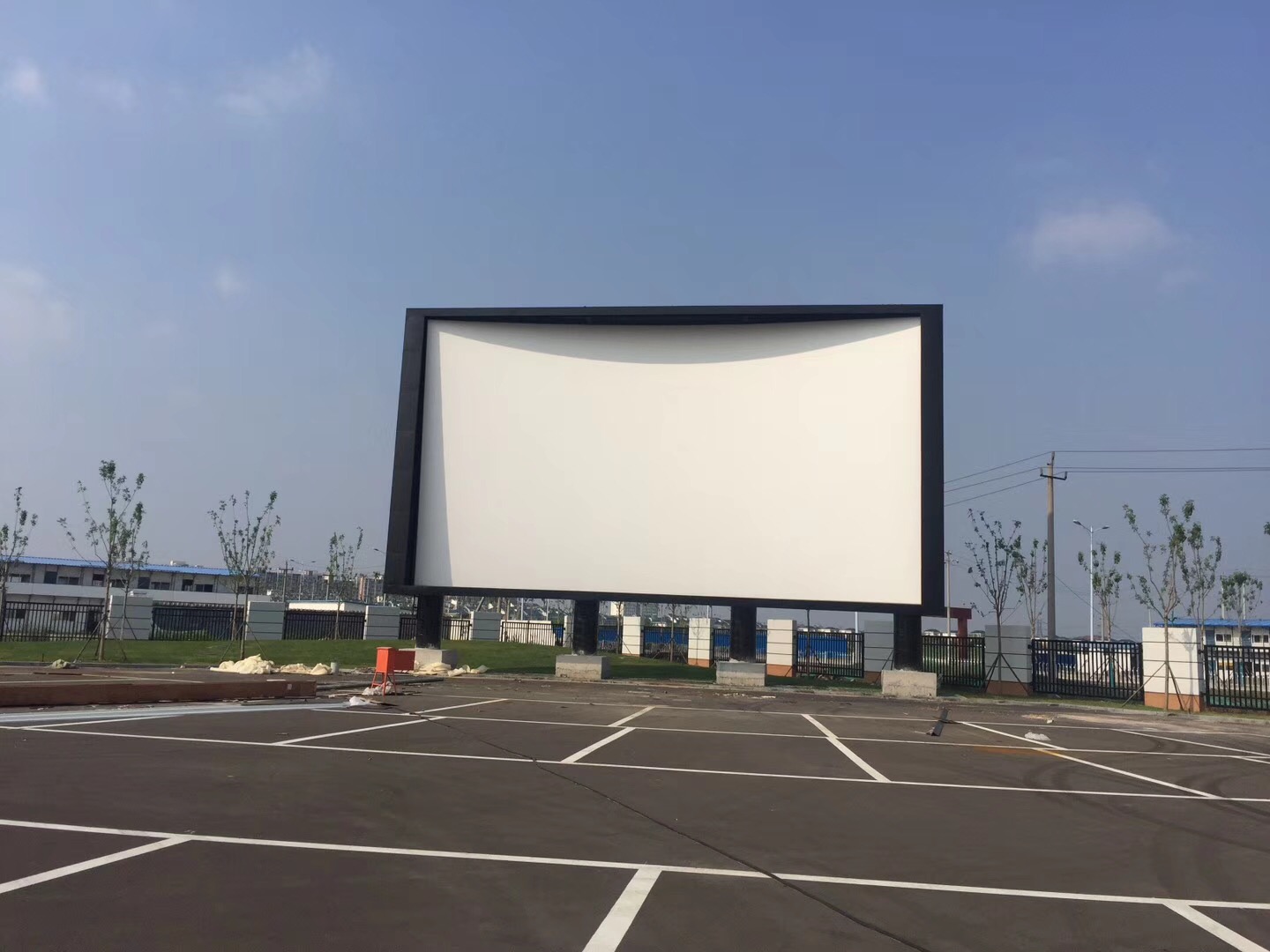Drive-in cinemas are a unique movie-watching experience where audiences sit in their own cars and tune in via FM radio to watch outdoor movies. In this setup, a parking lot is transformed into a movie screening venue, allowing viewers inside their cars to see clear, realistic, and stable images from various positions. The sound is transmitted into the car through FM signals, enabling the audience to comfortably watch the movie from inside their vehicles. This form of entertainment is one of the byproducts of the highly developed automotive industry. Ever since June 6, 1933, when Richard M. Holling shead opened the world’s first drive-in cinema in his backyard in New Jersey, USA (which could accommodate 400 cars with a screen size of 12.2m by 9.15m), this leisure activity quickly became popular throughout North America along with the spread of automobiles, establishing itself as a distinctive cultural feature.
Essential Equipment
1. Movie projector
2. Projection control vehicle (an old bus may serve the purpose)
3. Standard audio power amplifier (optional).
4. Stereo movie soundtrack transmitter with adjustable frequency, power, and transmission range
5. Multi-layer high-gain antenna array (for controlling the listening area, optional)
6. FM directional transmission antenna (to manage the direction and area of the listening, and prevent radio interference, optional).
7. Car inverter power supply (Input: 12V; cigarette lighter socket; Output: AC 220V)
8. Emergency broadcast system
9. Multiple wireless microphones (for performances and hosting meetings, optional).
10. Wireless/wired stereo speakers (for performances and stage events)
11. Dual machine synchronized remote control for movie projection (optional)
12. Fabric hanging screens and steel screens
13. Gasoline generator (above 10 kilowatts, optional)
14. Portable waterless toilets (optional)
15. Ticket verification machines (optional)
16. Large parking lot
Operating Requirements
Typically, taking into account the area occupied by cars and passageways, each vehicle requires about 27 square meters. By dividing your existing total site area by 27, you can calculate the maximum number of cars the site can accommodate. For over 200 cars, a screen size of 100-150 square meters is recommended; for less than 200 cars, 60-120 square meters is appropriate. The national standard for indoor cinemas is a minimum of 6000 lumens. Although there’s no established standard for outdoor cinemas, screen brightness should be increased to compensate for external light pollution. For a cost-effective projection system, specialized all-in-one machines that operate on domestic electricity for drive-in cinemas can be used, requiring only AC 220V with a maximum power consumption of 1500 watts. The venue should be flat and free of obstructions, with the projector and screen cables aligned along the central axis of the site. Fixed screens offer strong wind resistance, while inflatable screens provide ease of mobility and are convenient for rentals, each with their advantages and disadvantages. Others have nothing to do with equipment.
Investment Costs
Additional income streams include movie patch advertising, roadside cinema advertising, cinema naming rights, and rental of cinema equipment and venue.
Drive-in cinema equipment can be installed on old buses, offering significant mobility and eliminating the need for construction investments. This leads to low investment requirements for the site. An area of over 3000 square meters is needed, and it does not affect municipal planning as long as the site is expected to remain unused for over two years.
The construction period for a drive-in cinema is relatively short, typically taking 40-45 days to reach operational conditions.
